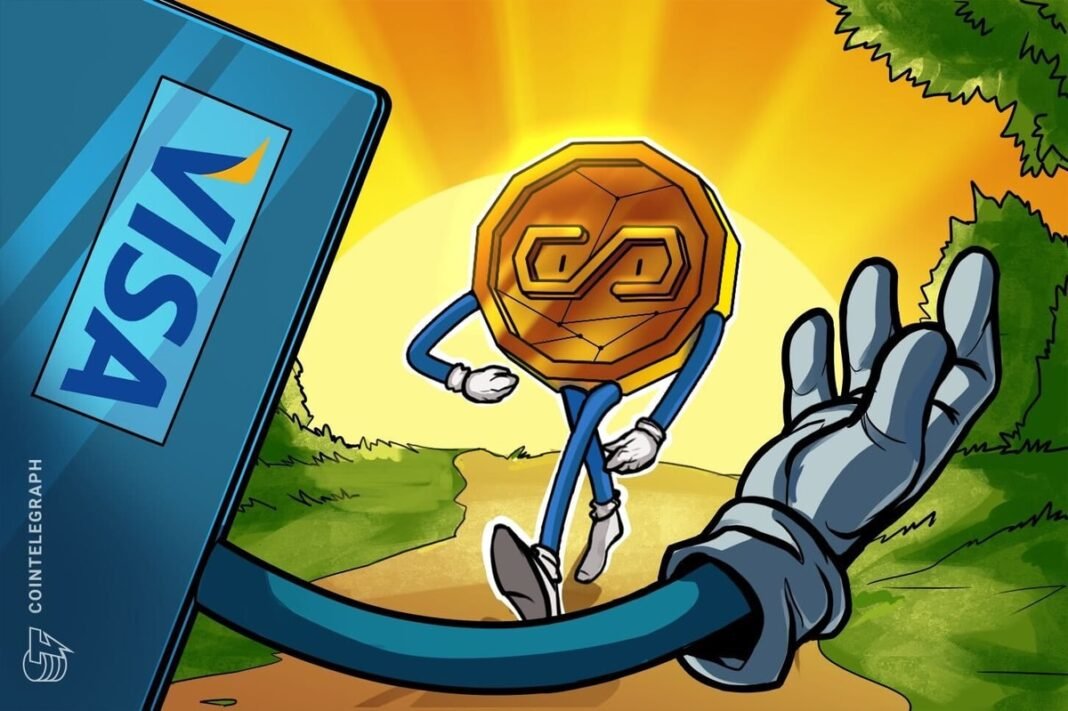Visa’s Stablecoin Offensive: A Strategic Masterstroke?
Expanding Horizons: New Stablecoins and Blockchains
Visa is set to integrate support for four additional stablecoins across four distinct blockchains. This expansion, revealed by CEO Ryan McInerney during the company’s Q4 earnings call, signifies a major push into the crypto realm. While the specific stablecoins and networks remain undisclosed, this initiative will undoubtedly bolster Visa’s existing portfolio. In 2025, expectations are high for transparency in these choices, especially given the recent regulatory developments around stablecoins globally.
Currently, Visa supports prominent stablecoins like Circle’s USDC and Euro Coin (EURC), as well as PayPal USD (PYUSD) and Global Dollar (USDG), operating on networks such as Ethereum, Solana, Stellar, and Avalanche. This existing infrastructure provides a solid foundation for further expansion, hinting at a future where stablecoins become seamlessly integrated into everyday transactions. The move is not just about adding more options, but about strategically aligning with key players and networks to maximise impact.
The Driving Force: Demand and Growth
McInerney highlighted the “particular momentum with stablecoins” as a key driver behind this expansion. He pointed to a staggering $140 billion in crypto and stablecoin flows facilitated by Visa since 2020, demonstrating the growing appetite for digital asset solutions. The evidence is clear: consumer behaviour is shifting, and Visa is keen to capture this burgeoning market. The figures speak for themselves, and Visa is clearly paying attention.
Further bolstering this narrative, global consumer spending within Visa’s stablecoin-linked card services has quadrupled compared to the same quarter last year. This exponential growth underscores the increasing user adoption and confidence in stablecoins. Moreover, monthly volume has now surpassed a $2.5 billion annualised run rate, indicating a significant and sustainable trajectory. By the end of 2025, this figure could be substantially higher, solidifying stablecoins as a mainstream payment method.
Strategic Pillars: Banking and Cross-Border Payments
Visa’s strategy is focused on two key areas: broadening stablecoin offerings for banks and other traditional financial institutions, and facilitating more efficient cross-border transactions. McInerney emphasised that “there is much more to come in this space,” signalling a long-term commitment to shaping the future of payments. By targeting these two pillars, Visa is aiming to bridge the gap between the traditional financial world and the burgeoning crypto ecosystem.
Empowering Banks: Minting and Burning
A crucial aspect of Visa’s strategy involves enabling banks to mint and burn their own stablecoins through the Visa tokenised asset platform. This capability is a game-changer, enabling financial institutions to participate directly in the stablecoin economy and create bespoke solutions for their clients. It represents a significant step towards decentralisation and financial innovation, empowering banks to take control of their digital asset strategies.
Read Also: Crypto Evangelist at Moonshot 2025 — Building Momentum and Redefining Africa’s Innovation Story
Visa Direct: Enhancing Cross-Border Transfers
Visa is also integrating stablecoin capabilities into its Visa Direct platform to enhance cross-border money movement. This initiative addresses a major pain point in the current financial system, enabling faster, cheaper, and more transparent international payments. By leveraging stablecoins, Visa can streamline the process and reduce reliance on traditional intermediaries, ultimately benefiting consumers and businesses alike.
Challenges and Opportunities
While Visa’s foray into stablecoins presents immense opportunities, it also faces several challenges. Regulatory uncertainty remains a significant hurdle, with governments worldwide grappling with how to regulate digital assets. Navigating this complex landscape will be crucial for Visa’s success. In the UK, the regulatory framework is still developing, and Visa will need to adapt to any new rules and regulations that emerge in 2025.
Another challenge lies in ensuring the security and stability of the stablecoin ecosystem. Maintaining trust and confidence in these digital assets is paramount, and Visa will need to work closely with its partners to mitigate any risks. This includes implementing robust security measures and adhering to strict compliance standards. However, the potential rewards outweigh the risks, and Visa is well-positioned to capitalise on the growing demand for stablecoins.
Visa’s move into stablecoins is not just a tactical decision; it’s a strategic bet on the future of finance. By embracing digital assets and empowering banks and businesses to participate in the crypto economy, Visa is positioning itself as a leader in the evolving payments landscape. The company’s commitment to innovation and its global reach make it a formidable force in the crypto space. As the regulatory landscape becomes clearer and adoption continues to grow, Visa’s stablecoin offensive could well be a masterstroke, transforming the way we send and receive money around the world. The question remains, which stablecoins and blockchains will form the next part of Visa’s grand plan? This is something the entire crypto world will be watching closely.






